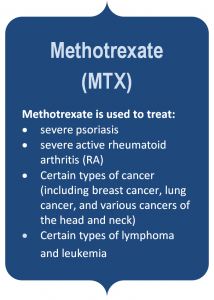
Accuracy in lab testing is important—after all, the results of some tests could literally mean life or death for patients. Laboratory professionals want to get the right result the first time and know they are doing the best they can for the patients they serve.
The Challenges
Drug abuse continues to be a global health & safety issue. The global burden is truly staggering. Approximately 35 million people worldwide are estimated to suffer from drug use disorders and require treatment services. In 2017, drug use was directly responsible for over 166,000 deaths worldwide, and indirectly responsible for an additional 585,000 deaths. Additionally, 1.5% of global disease burden results from alcohol and illicit drug addiction. In some countries, that number is over 5%.
New drugs are consistently entering the market, and more familiar drugs are being used and abused in new ways. There is a viable need for rapid detection in a variety of settings – such as hospitals, pain management clinics, and behavioral health centers. Identification via drugs of abuse testing is the first step towards identification, treatment, and rehabilitation in overdose and abuse situations.
Screening is a vital part of treating substance abuse and addiction. Many labs test for drugs of abuse but not all drugs-of-abuse test are created equal. Some detect only the drug itself while others also detect drug metabolites. If a drugs of abuse assay isn’t also detecting the key metabolite, they could be missing positive results.
Let’s use fentanyl as an example: many labs might think they are testing for fentanyl because they are running a general drug of abuse panel with opiates included. However, fentanyl is a synthetic opiate and is not detected by running the general opioid test! Due to its short elimination half-life and up to 90% metabolism, fentanyl is difficult to detect in urine. Fentanyl is predominantly converted to norfentanyl, so utilizing a test that detects this major metabolite should reduce the risk of false negatives.
The Nitty Gritty
What exactly are metabolites and how do labs use them to detect substance abuse? Drug metabolism is the chemical alteration that any drug undergoes inside the body. When a drug enters the body, it gets altered, or metabolized, which results in other substances called drug metabolites. Some metabolites stay in the body long after the parent drug has been expelled from the system, which means there’s a higher probability of detecting these drugs if you test for the metabolite instead of the parent drug. Most laboratory drugs of abuse tests are based on urine.
There’s more for labs to consider, of course. The window of detection is the length of time the substances or their metabolites can be detected in a biological matrix. This can depend on many factors, including:
- Hydration
- Dosing level
- Metabolism, determined by genetic and environmental factors
- Duration of drug use
- Individual’s body mass
- Urine pH
- The biological specimen tested
Ultimately, the entire clinical picture must be taken into account for either a positive or a negative result. If the result is negative, one must consider if the patient was not taking the drug, was taking a lower dose than instructed, or was taking the drug properly but the results were negative due to one of the factors we discussed above. If a positive result is obtained for a drug not prescribed to the patient, one must consider if the patient was taking the non-prescribed drug, has a false positive result, or if the drug is simply a metabolite of a prescribed drug.
The Clinical Value
Drug testing should not be viewed by providers as simply a way to confirm substance abuse, but as a stepping stone to successful addiction treatment. The American Society of Addiction Medicine recommends that drug testing be used in combination with a patient’s self-reported information about substance use. Any discrepancies between the test and the self-report should be used as a point of engagement for providers. The ASAM offers a pocket guide to appropriate drug testing that is “intended to aid clinicians in their clinical decision-making and patient management.”
Surprisingly, no universal standard exists today in clinical drug testing for addiction identification, diagnosis, treatment, medication monitoring, or recovery. The ASAM recommends that addiction treatment programs and providers establish a routine immunoassay panel, and that these panels be updated regularly based on changes in substance use (and abuse) trends.
To meet provider and patient needs, labs must consider the need to test for metabolites when selecting their drugs of abuse assay. Using assays that not only test for the drug but also the key metabolite reduces the risk of false negatives.
Sekisui Diagnostics’ ARK™ Fentanyl Assay provides a simple and rapid analytical screening procedure for detecting fentanyl. It has a high cross reactivity to norfentanyl (major metabolite), which is important because ~90% of fentanyl is excreted as norfentanyl. Detecting this major metabolite should reduce the risk of false negatives. Additionally, our ARK™ Tramadol Assay provides a simple and rapid analytical screening procedure for detecting tramadol. The assay has a high cross reactivity to O-desmethyltramadol and N-desmethyltramadol (main metabolites). With the majority of tramadol excreted as metabolites, detecting these key metabolites should reduce the risk of false negatives.
There’s no doubt that substance abuse is a global affliction. Lab must work together with providers to appropriately assess patients and improve outcomes and to do so, they must offer the most accurate results possible.



Share Article